It is well known that there are a lot of wonderfully preserved ichthyosaur fossils with skin impressions, especially from the famous Posidonia shale of Holzmaden. But it is much lesser known that there are also some soft tissue impressions of other marine reptiles as well, for example of some plesiosaur specimens. Admittedly, so far none of them is as well-preserved as the best ichthyosaurs fossils. But today I don´t want to show you ichthyosaurs or plesiosaurs but a truely spectacular fossil from the Posidonia shale of Frittlingen. It is a remarkably well preserved leg of a Steneosaurus bollensis, a medium sized marine crocodile which is next to the ichthyosaurs among the most common marine reptiles of the Posidonia shale.
This particular fossil is neither very big nor complete, it´s just a single hindleg, nothing you would normally show in an enormous paleontology museum like the Museum am Löwentor at Stuttgart, which has so many bigger and more complete Steneosaurs in its collection. But it´s still really special, as this leg has not only its bones preserved, but also parts of its skin. I had to make a composite of two different photos to show you the whole leg at a better foto quality, as it was hardly possible to take a photo of the whole leg without getting reflections.

In some respects this fossil is even more interesting than those of ichthyosaurs, as we can still see really fine surface structures and patterns of the skin, even with individual scales. You can see a more detailed photo of the upper part here:
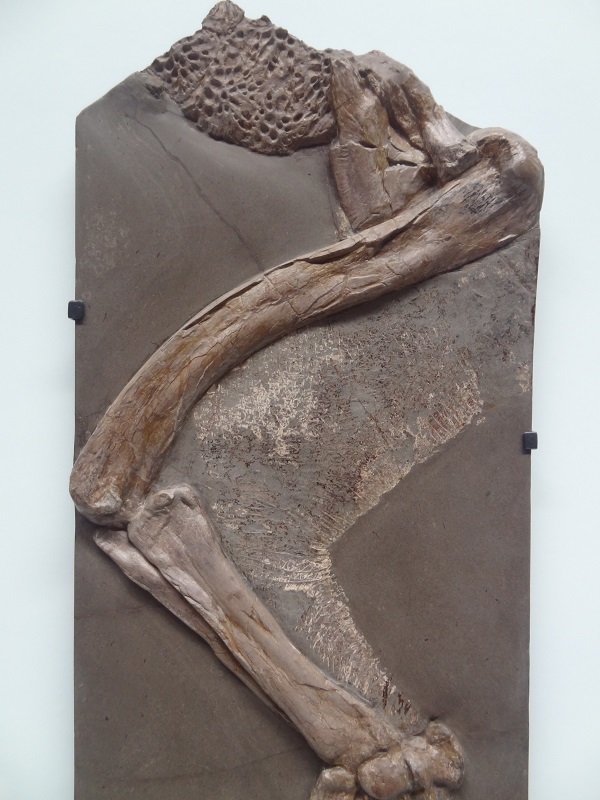
And of the lower part:
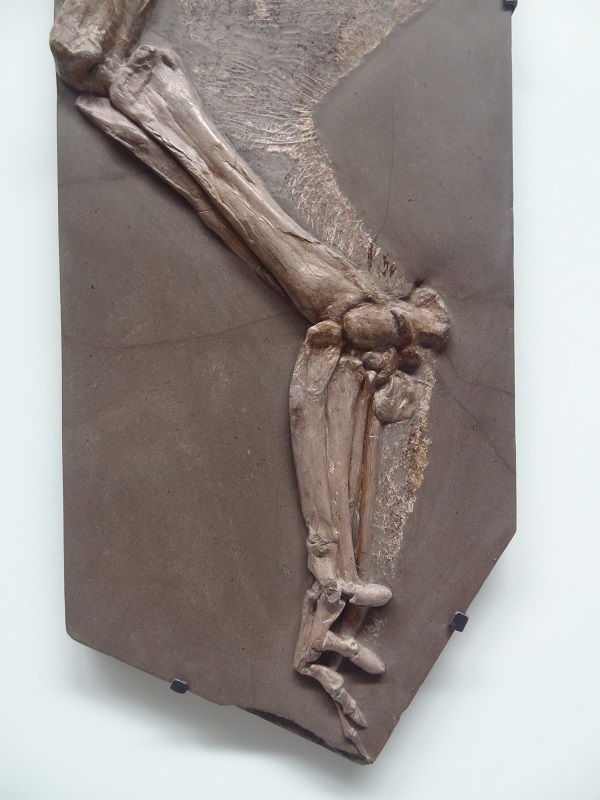
Of course you want to see some more detailed photos of the scales, which are very small and rectangular in shape. This is likely the inside or underside of the leg, where we find also smaller scutes in modern crocodiles.
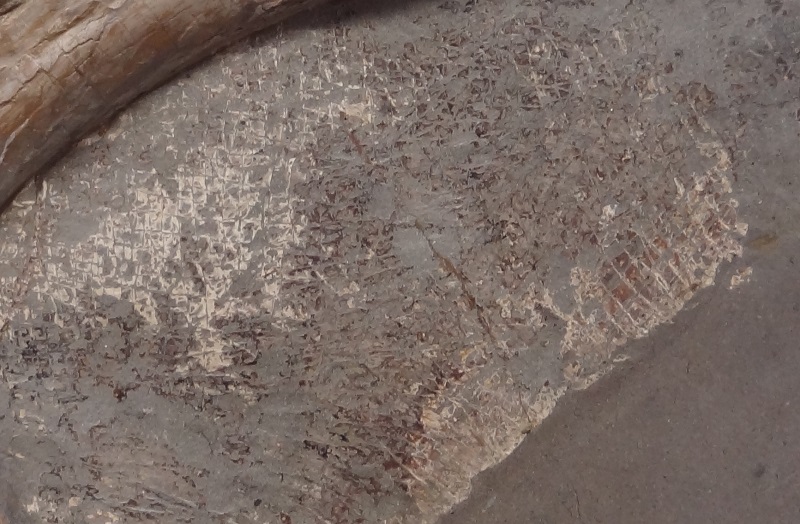
Compared with the skin of modern crocodylians, they are still very fine and numerous. Here is a photo which I took at Berlin Zoo, which shows the differences in size and arrangment of the scutes between the outside and inside of the leg:

Hindleg of a spectacled caiman (Caiman crocodilus), Berlin Zoo
Here a direct comparison:
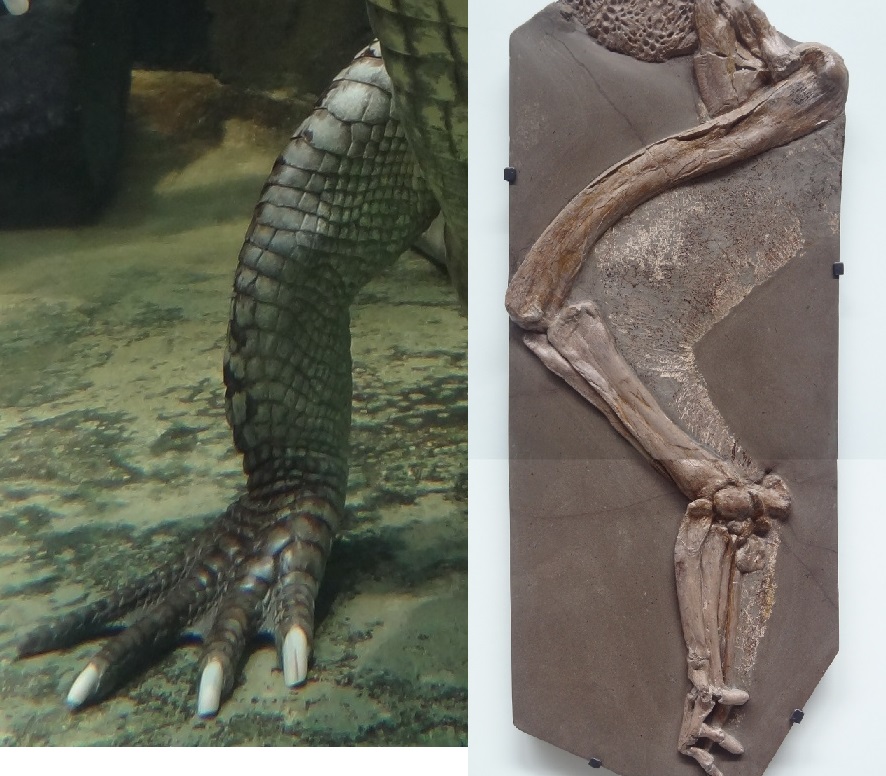
Spectacled caiman (Caiman crocodilus) leg compared with Steneosaurus leg
If you take a close look, you can still even see where the scales had wrinkles in-between:

This is really quite interesting as it seems to indicate a trend toward a fine, more flexible and smoother skin in marine crocodylians, which had clearly a very different biology than all crocodylians we see today. I write „seems to indicate“, because it could be theoretically also possible that the ancestors of Steneosaurus already had finer scutes than extant crocodylians. A simplifaction and smoothing of the skin would be however fully plausible within a lineage which evolved into mainly aquatic and quite likely much more agile marine predators. I find it quite interesting that among all modern crocodylians we also find the smoothest and least gnarly skin in the most aquatic form, the bizarre gharial (Gavialis gangeticus). Even its dorsal osteoderms are much lesser pronounced than in crocodiles or alligators.
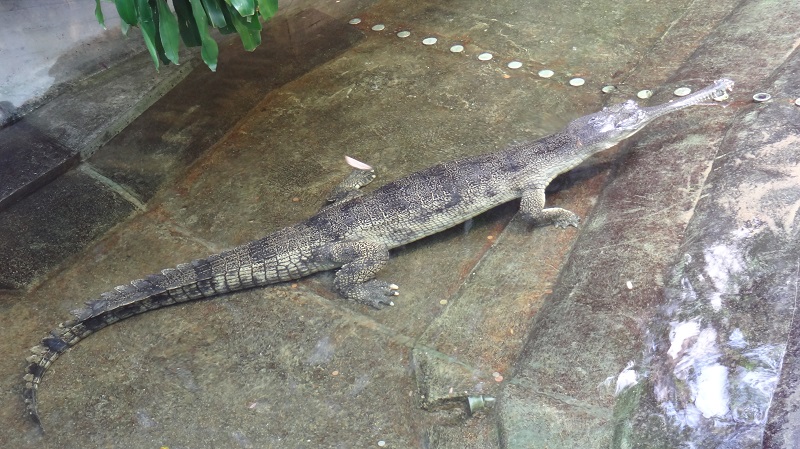
Even their limbs look much more reduced and paddle-like than those of other modern crocodylians.

We also find a strong reduction of scales in highly aquatic turtles like pig-nosed turtles, softshell turtles and the leatherback turtle, and we also know that mosasaurs had only tiny scales, and ichthyosaurs even no more scales at all.
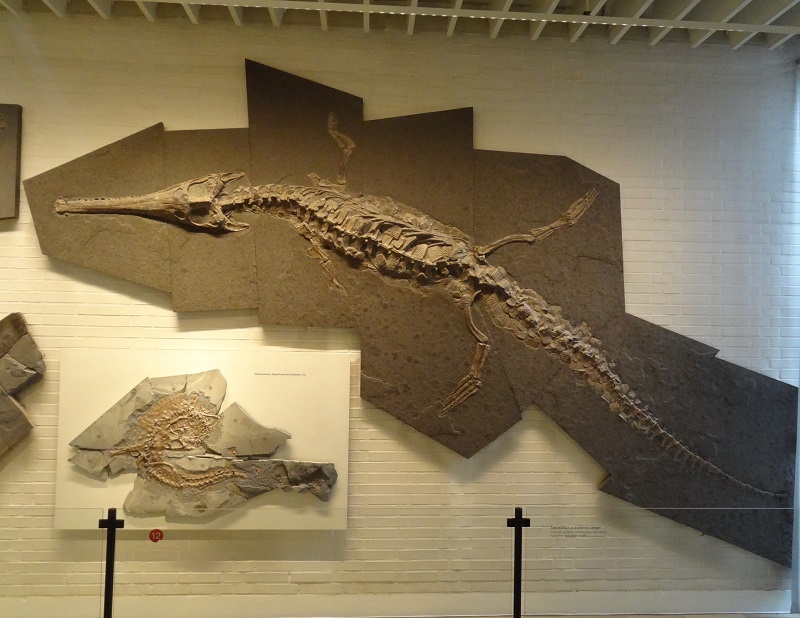
It would be really interesting to know how the skin looked in the most derived marine crocodylians like the metriorhynchidae, that included large macropredatory forms like Dakosaurus maximus. Fossils like this Steneosaurus leg are of course also extremely worthy for paleoartists, as they show us information about anatomical details which we could never know for sure from the bones alone. Let´s hope that more of such superbly preserved fossils will be found in the future.

What is the specimen number of this magnificent Steneosaurus specimen? 🙂
Sorry, but I sadly don´t know.